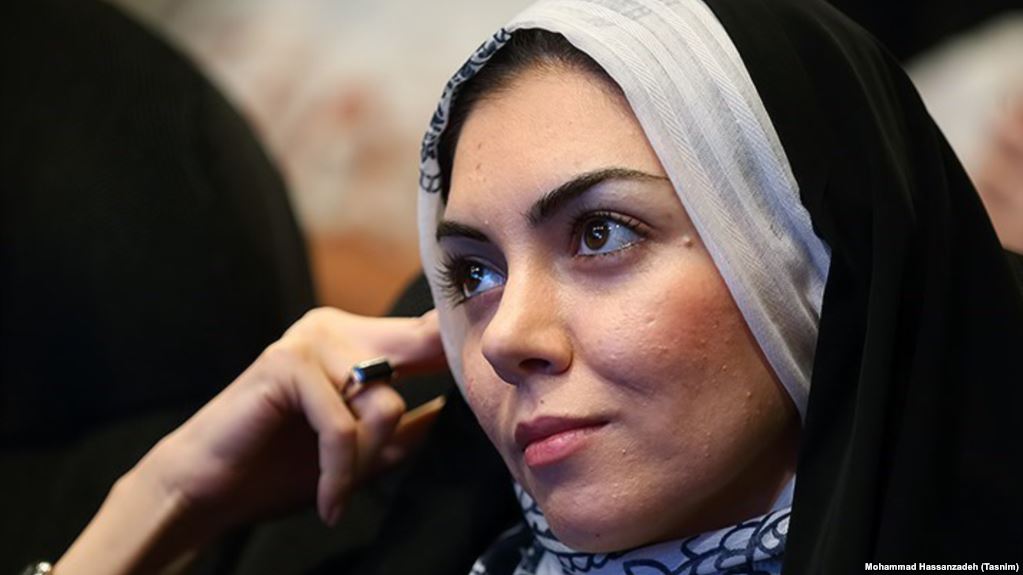A well-known Iranian television personality has been accused of hypocrisy after images of her in which she is not adhering to the country’s Islamic dress code surfaced online.
Presenter turned actress Azadeh Namdari has for years promoted compliance with the hijab, which in Iran refers to Islamic dress that covers the hair and body.
In particular she has touted the wearing of the black chador, a garment that covers women from head to toe, leaving the face exposed.
In a 2014 interview, she said she was proud to be a chadori, an expression used in Iran to refer to women who choose to wear the chador, which has been praised by conservatives as offering women the best protection.
Women’s dress has been heavily scrutinized in the Islamic republic since the 1979 revolution, when adherence to an Islamic dress code became compulsory.
The dress code dictates that women’s hair and body must be covered in public. According to the Islamic rules, women are not required to wear the hijab when at home and among close relatives.
Morality police launch regular crackdowns on those who are not fully respecting rules relating to the hijab.
“You have to believe to be a chadori. [Otherwise] you’ll be exposed,” she said in the interview with the hard-line Vatan-e Emruz daily.
“Thank God that I went on air, I was a chadori. I felt safe and I felt respected. All of these are blessings that the chador has brought me,” Namdari said in the interview.
“I apologize for saying that, but I’m more beautiful with this chador,” she added in the front-page interview.
On Instagram she often posted pictures of herself wearing a black chador. During a recent trip to Geneva she posted a photo of herself wearing her black chador outside the United Nations Office.
But leaked images, apparently from the same trip, showed her not only without the chador, but with hair exposed while wearing a jumpsuit outdoors.
The images prompted a backlash, with many Internet users accusing her of deceit and telling lies. Namdari has responded to her critics by claiming that her head covering had slipped away for a second, and noting that she was among close relatives.
“I apologize to my friends, to those who have been surprised and have paused after seeing these images. I just want to give them a brief explanation: I was with my relatives in a green location,” she says in a video posted online.
She then appears to suggest that her head scarf fell briefly as she was pushing her 10-month-old baby in a stroller.
The online attacks against her have continued, nevertheless.
“It’s your issue if you’re a chadori or not. But telling people something and doing something else is [wrong],” a comment on Twitter said.
“Our problem with Azadeh Namdari is that she lied. Whether she respects the hijab or not is not our business, but her lies are an insult to the people, ” a Twitter user said while posting pictures of the presenter with and without the hijab side by side.
https://www.instagram.com/azadenamdari.original/
“Namdari is the perfect symbol of the Islamic republic, the republic of hypocrisy where officials chant ‘Death To America’ while sending their kids to study in the U.S.,” wrote one Facebook user in a comment.
Namdari has accused those who posted her photos online of invading her privacy.
But Internet users have said that the park in which she apparently was photographed without her head-covering is a public space.
They’ve also said that compulsory Islamic dress is not a private issue in Iran.
“The hijab has never been a private issue. It is always in all societies a social and political issue,” wrote prominent women’s rights activist Asieh Amini on her Facebook page.
“But most importantly than whether the hijab is private or not, is the issue of lies,” Amini wrote with the hashtags No To The Hijab and No To Lies. “Promoting something that we don’t believe in and using all media and public facilities to promote that lie.”
Over the past three decades, Iranian authorities have used media campaigns, force, and harassment to push women to respect the hijab, while depriving them of the right to choose what they wear and how they appear in public.
State-controlled television has been among the major tools used by Iranian authorities to promote compliance with compulsory Islamic dress.







